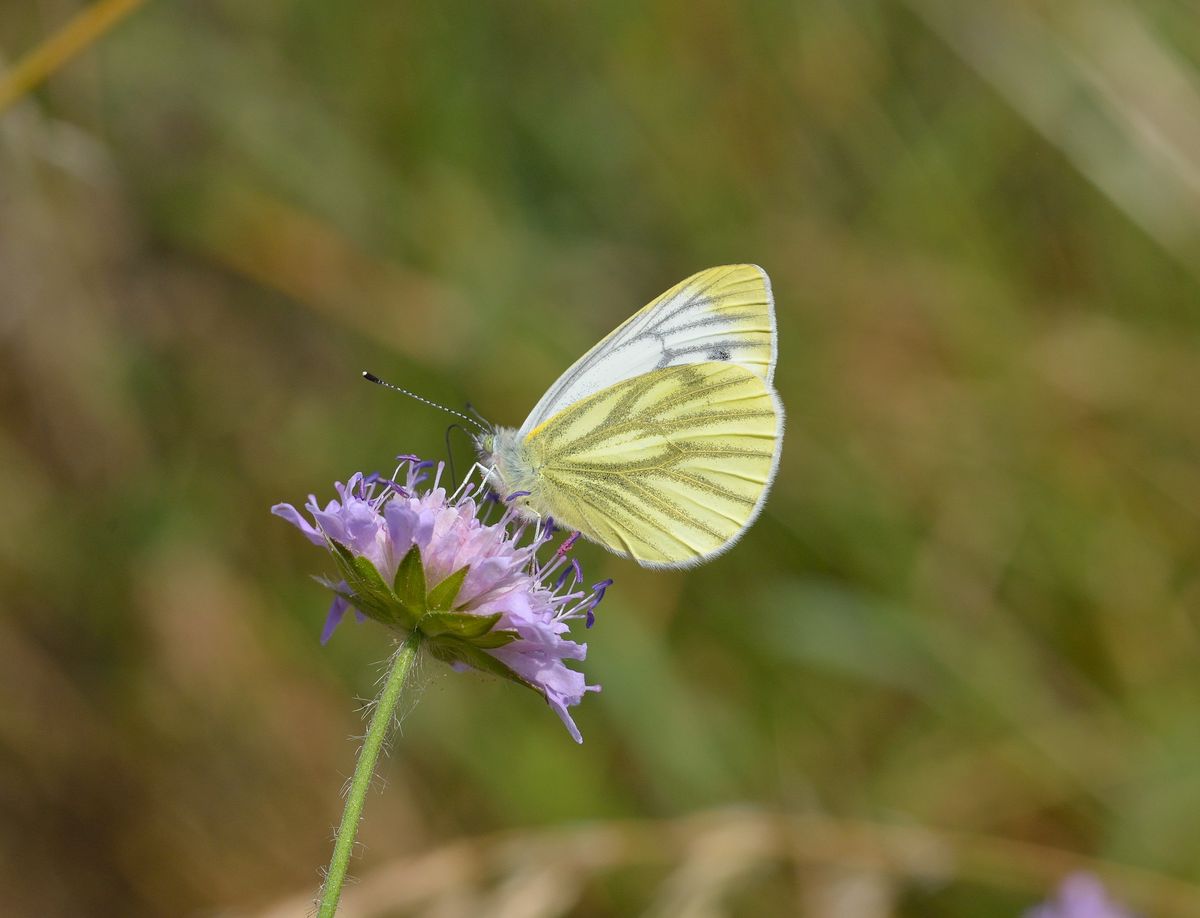Thirsty Butterflies Disappearing from the UK

Green-veined white butterflies with pale-yellow wings, among other butterfly species, could disappear from southern Britain in the next 35 years if climate change and habitat loss continue, according to new research.
"The results are worrying," Tom Oliver, lead author of the study and an ecological modeler at the Centre for Ecology & Hydrology in Oxfordshire, United Kingdom, said in a statement. "For drought-sensitive butterflies, and potentially other taxa [group of organisms], widespread population extinctions are expected by 2050."
Climate models predict that higher levels of atmospheric greenhouse gases, like carbon dioxide, will intensify weather events, meaning summers could get much hotter and drier in some parts of the world.
But scientists say there is a ray of hope for butterflies. "To limit these losses, both habitat restoration and reducing [carbon dioxide] emissions have a role," Oliver said. "In fact, a combination of both is necessary." [See Photos of Britain's Beautiful Butterflies]
Butterflies' decline and recovery
In the new study, researchers studied how 28 butterfly species reacted to an extreme drought in 1995, the driest summer in the United Kingdom since records began in 1776. Of the 28 species, six declined dramatically following the drought — green-veined white, ringlet, speckled wood, large skipper, large white, and small white butterflies.
Butterflies thrive in warm weather, the insects suffer. Their larvae cannot withstand sweltering conditions, and dry, brittle soil hurts plants that host butterflies.
Sign up for the Live Science daily newsletter now
Get the world’s most fascinating discoveries delivered straight to your inbox.
The researchers used a computer model to look at how the six drought-sensitive species could recover in the four years following a drought. They set up monitoring sites in seminatural habitats — a category that includes grasslands, hay meadows, woodlands, historic sites, bogs, wetlands and heather moorlands — and tracked butterflies within a 1.9-mile (3 kilometers) radius. Species that had more available habitat were less sensitive to the drought and more likely to recover quickly, whereas butterflies with less habitat — often areas reduced by human activity — felt the effects of the drought more intensely and had a much harder time rebuilding their populations.
Larger areas of habitat give the butterflies more options for gathering nectar from diverse plants, connect butterflies with nearby populations, and provide "microclimatic conditions," which are small regions that could be slightly cooler and wetter because of leaf shade.
The butterflies are unlikely to evolve in small ways, or "microevolve," over a very short time frame to increase their drought tolerance, because their populations are small and their bodies are physiologically limited in how they can adapt to drought, the researchers said in their paper.
"Landscape management offers the best solution to preventing extinctions" among drought-sensitive species, the researchers concluded in their paper, published today (Aug. 10) in the journal Nature Climate Change.
Although the study focused on drought-sensitive butterflies in southern Britain, severe droughts are expected to hit many regions around the world." The study looked at butterflies, but the conclusions are potentially valid for other species, such as birds, beetles, moths and dragonflies," Oliver said.
Elizabeth Goldbaum is on Twitter. Follow Live Science @livescience, Facebook & Google+. Original article on Live Science











